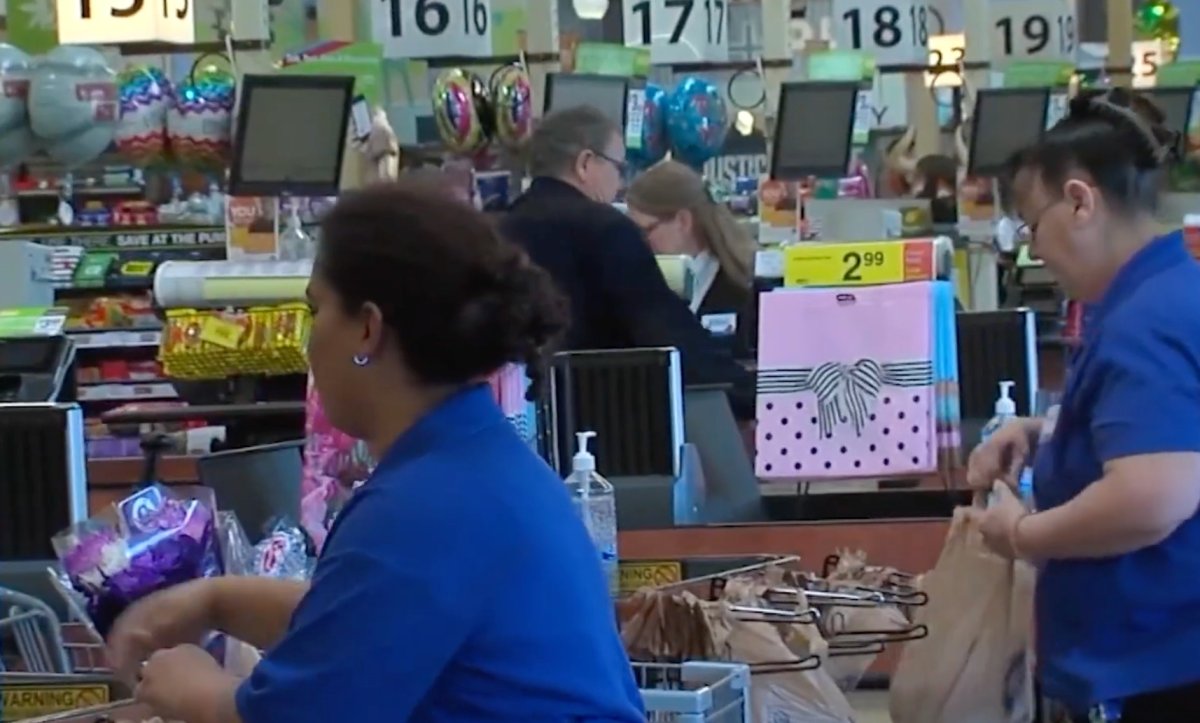
If you're a regular at Kroger, your next grocery run might come with a surprise at checkout. A small but impactful change is quietly rolling out, and it could affect how you pay—especially if you're someone who still carries coins.
With more stores following suit, the way Americans handle everyday transactions may be entering a new chapter.
For some, it might be a welcome shift toward faster checkouts and digital convenience.
For others, it could bring a few unexpected headaches—especially if you're used to paying with exact change.
Kroger’s penny policy signals a big shift
Shoppers at Kroger have recently noticed a new sign posted at self-checkout stations: "The US Treasury has stopped production of pennies, which is now impacting supply. If using cash for payment, please consider providing exact change."
Although the store is still accepting pennies for now, Kroger is urging customers to bring exact change due to what it calls a “supply impact.”
A spokesperson for the grocery chain confirmed that they’re continuing to monitor the situation and assess how the end of penny production may influence operations moving forward.
Source: Instagram / dearbornareacommunitymembers
Why the penny is disappearing
The US Treasury confirmed that it plans to stop minting pennies by early 2026.
The decision comes after it reported an $85.3 million loss in 2024 alone from producing more than three billion pennies—each costing nearly four cents to make.
The final order for blank penny planchets was placed in May 2025. Once that supply runs out, it will mark the official end of new penny production.
In line with other countries like Canada and Australia, the US is now following suit in phasing out its smallest denomination.
Also read: Do you have these rare pennies? Find out if your spare change could be worth hundreds!
How other stores are adapting
Kroger isn’t alone in preparing for a post-penny future.
Kwik Trip, a chain with over 900 locations, has announced that it will round all cash transactions down to the nearest five cents. Their registers will do the math automatically, giving shoppers a small but meaningful break.
Sheetz made headlines when it offered customers a free self-serve drink in exchange for $1 in pennies.
Love’s Travel Stops, with more than 660 locations, is testing rounding policies as well.
If they run out of pennies, some stores will round in favor of the customer—a rare win in today’s economy.
Also read: Pennies are disappearing—here’s what to do with your old coins
Will rounding always help the shopper?
Not necessarily. The Federal Reserve Bank of Richmond has warned that if retailers consistently round up instead of down, customers could lose money over time. This phenomenon—known as the "rounding tax"—could cost Americans around $6 million annually, according to their estimates.
That said, stores like Kwik Trip are taking a consumer-friendly approach by rounding down. Still, it’s worth paying attention to your receipts and asking your cashier about your local store’s policy.
What this means for you
If you regularly pay with cash and like to use exact change, this is the time to start holding onto your nickels and dimes.
While pennies will still be accepted during the transition, more stores may start requesting exact change or using rounding methods to streamline transactions.
Those who pay with debit or credit cards won’t notice any changes—digital transactions will still be processed to the exact cent.
Also read: A new change at this convenience store could leave your pockets a little lighter—literally
A small coin with a big legacy
The penny has been part of American life since 1793, with Abraham Lincoln’s face gracing it since 1909.
For many, it represents childhood piggy banks, thriftiness, and the “lucky penny” rhyme passed down through generations.
Though its practical value may be fading, its cultural significance remains. The penny’s departure is yet another reminder that even small changes can leave a lasting mark on everyday life.
Also read: Is your local Kroger on the closure list? Here’s what to know
Tips for navigating penny-free shopping
- Bring exact change: Try to use coins in five-cent increments to avoid surprises at checkout.
- Opt for digital payments: Card and mobile app purchases still charge to the exact cent.
- Check store policies: Rounding practices may vary between retailers.
- Cash in your coin jar: Banks and coin machines can still accept your spare change.
- Stay updated: Keep an eye on signs and store communications as the change unfolds.
The penny may be small, but its exit is stirring up big conversations about how we shop, pay, and adapt. Whether you’re nostalgic about change jars or ready to embrace a coin-free future, one thing is clear: even tiny coins can leave a lasting impact.
As stores like Kroger adjust their policies, now’s the time to think about what’s in your wallet—and what comes next.
Read next:
- Some Kroger deliveries are going away—Here’s what to know
- Changes may be coming to your local Kroger—here’s what we know so far
- Walmart, Kroger & others quietly tightened their coupon rules—here’s what shoppers need to know
Will you miss the penny, or are you glad to carry fewer coins? Have you already experienced rounding at your local store? Let us know your thoughts, stories, or tips in the comments below—we’d love to hear how you’re adapting to the change.
And if you’ve got a clever way to repurpose or donate your pennies, share your ideas with the GrayVine community! Whether it’s art, savings, or charity, the smallest coin still has value in creative hands.






